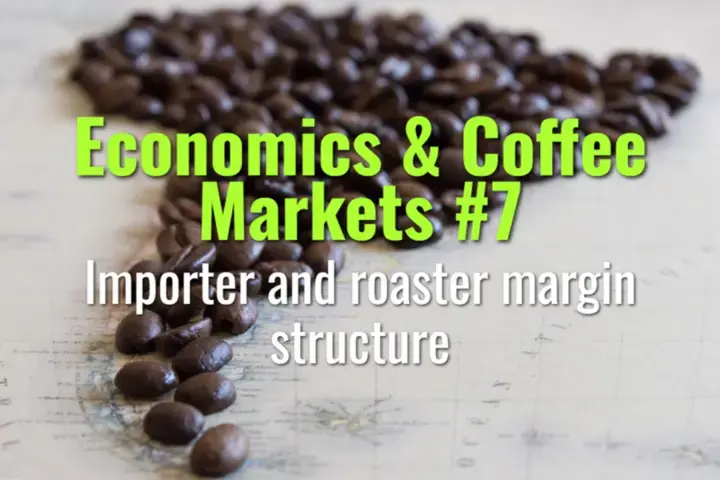Importer and roaster margin structure
How importers and roasters build margins into coffee pricing, balancing costs, risk, and profitability across the supply chain.
- Coffee Basics Nerds
- 2 min read
Article 7 of 12 in Economics & Coffee Markets/

Why Margin Structure Matters
- Coffee passes through several hands before reaching the consumer.
- Each actor (exporter, importer, roaster, café) adds costs and applies margins.
- Transparency in these steps is key to fair trade and consumer trust.
Importer Margin Structure
- Roles: Finance shipments, handle logistics, manage risk, and provide QC services.
- Costs Covered:
- Freight and insurance.
- Warehousing.
- Sampling and cupping.
- Interest and hedging costs.
- Margins: Typically 5–15% depending on contract size, services, and risk.
- Value-Add: Importers often provide financing to producers or credit terms to roasters.
Roaster Margin Structure
- Costs Covered:
- Green coffee purchase.
- Roasting labor, energy, and maintenance.
- Packaging and labeling.
- QC cuppings and wastage.
- Marketing and sales overhead.
- Margins:
- Wholesale → ~30–50% gross margin.
- Retail (bag sales) → ~50–70% gross margin.
- Café drinks → margins often exceed 70% but with high labor and fixed costs.
Example Breakdown (per lb roasted coffee)
- Green coffee (imported): $3.00
- Importer services: $0.30 (10%)
- Roasting/packaging: $1.50
- Overheads/marketing: $1.00
- Total cost: $5.80
- Roaster sells wholesale at $8.00 → margin ≈ 38%
- Café sells drinks from same pound at $20–25 revenue → much higher retail margin.
Factors Affecting Margins
- Scale (larger importers/roasters operate on thinner margins per unit).
- Market positioning (commodity vs specialty premium).
- Risk exposure (fixed contracts vs spot purchases).
- Value-added services (education, direct trade, storytelling).
Summary
Importers capture margins for risk, logistics, and financing, typically 5–15%. Roasters add higher margins to cover production and brand value, with wholesale ~30–50% and retail much higher. Understanding this structure helps explain final consumer pricing and highlights where value is created in the coffee chain.